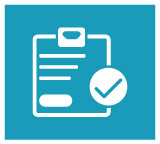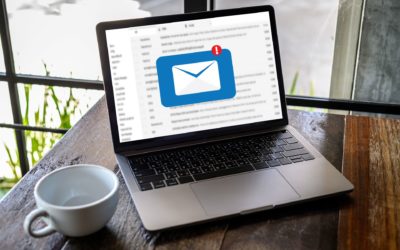Email communication is the modern version of direct mail. You wouldn’t leave out your signature or an intro greeting stating your purpose in a direct mail piece, so why would it be any different with email? Business professionals tend to get slopping with emails being sent out to their clients because of how easy it is to generate a message and send. We sometimes are a bit too quick and send things that haven’t been fully thought out yet. This piece is intended to remind you of the main best practices and email etiquette in the email marketing world today. Giving your sales team a crash course will help your sales and lead nurturing efforts blossom.
Business professionals tend to get slopping with emails being sent out to their clients because of how easy it is to generate a message and send. We sometimes are a bit too quick and send things that haven’t been fully thought out yet.
This piece is intended to remind you of the main best practices and email etiquette in the email marketing world today. Giving your sales team a crash course will help your sales and lead nurturing efforts blossom.
Create a Plan

Before I get into the basic email communication best practices for your sales team, as a company you should have an email communications plan. Just like an in-house design team does; every company should have basic standards they go by company-wide and are followed by everyone.
A great way to make it easier for your company and sales team in particular is to implement a basic template that every employee must use.
Your clients will get a sense of consistency when they receive multiple communications for different employees if they all are structured and formatted the same. In addition to one-off emails, your marketing and sales team should have an email communication editorial calendar to follow for all email campaigns that are implemented.
Email Automation

I always recommend having robust marketing automation software with email integration built right in; at minimum an email add-on to your current system is needed. Having these systems in place do many things for your business:
- Automate many processes that normally have to be done manually.
- Allow for template building.
- Save time for your sales and marketing teams.
- Allow for tracking and reporting of efforts.
- Create consistency.
Email Communication Best Practices

I always recommend having robust marketing automation software with email integration built right in; at the minimum an email add-on to your current system is needed. Having these systems in place do many things for your business:
1. Be Consistent
The reason I mentioned software above pertains to being consistent with your prospects and clients. By using an email add-on or software program, you are able to build templates and formatting requirements into your emails. By doing this it not only takes out some of the work for your team but also keeps a level of consistency among your team. There is nothing worse than receiving an email from a business that is in all CAPS or has half pink writing and half blue. These consistency issues will make or break a sale for you.
2. Keep Your Message Clear and Concise
Emails are not intended to be a novel for someone to sort through. Emails are a quick and concise form of communication that can be sent out to your targeted audience. Keep your message simple and bullet or list wherever possible so your readers are more likely to get through the entire message.
3. Be Timely
Be timely both when sending and responding back to emails. If you send out a monthly newsletter to your clients, make sure it falls within the same day or few days of each month. You don’t want to make your readers wait. Also, emails sent to your sales team need to be routed and responded to within 24 hours. If you have your system (software) properly setup, this should be no problem. If you choose the right software, the emails can actually be automatically routed to the correct person which will also save more time.
4. Be Professional
Sometimes people get too comfortable with email communication and often are not as professional as they should be. If your sales and marketing team hasn’t already, invest in a business writing course for them to take. You want anyone on your team who is sending emails to have this knowledge. Don’t let your team get too comfortable with clients or prospects and lose sight of the professional nature they should keep.
5. Write a Descriptive Subject Line
The subject line of any business email should be informative and entice your readers to open it. If it is too generic, too sales, or looks like SPAM, they may choose to ignore it. One of the first steps to lead nurturing through email communication is getting your readers to actually open your message. Research writing descriptive subject lines and get familiar with what may work best for you. Most importantly, never send an email without including a subject line.
6. Avoid Over Formatting or Designing
Emails tend to bounce back or go directly into someone’s SPAM filter if they are over designed; have too many attachments, etc. Be careful about what you insert into your message as well (video, graphics, etc.). You want to give yourself the best chance of someone opening your communication, so ask for permission to send those types of communications in subsequent emails. Your readers will be more open to receiving them at that point and be able to proactively adjust their SPAM settings.
7. Email Should Not be Your Only Communication Method
Knowing when to send an email or make a phone call is very important to your team and it could possibly make the difference of a sale or not. Email is a great way to get a foot in the door, but then maybe follow up with an email or vice versa. There are also some conversations in general that should be handled in person or over the phone. Email (like the old game of telephone) can lose much of its translation depending on the subject matter. In order to reduce confusion and frustration know when other types of communication may be more appropriate, don’t get lazy.
8. Write for Your Target Audience
Templates and scripted emails are good for certain situations. With that said, you want to make sure you are writing for your specific target audience or person. If you use a template, don’t be afraid to customize parts of it to make it more personal to the reader(s) it is intended for. Small touches like this will help your overall sales efforts.
9. Don’t Spam People
How many emails do you get in a day? Tons, right? Important business contacts should not be getting more junk emails from you as well. Each email should have a purpose and be meaningful. Don’t forward junk mail or jokes because you think you are reaching someone on another level. No business relationship should get that informal from the start. With that said, I do understand after you have a client for an extended period of time, your relationship with them may evolve over time and at times this may be more appropriate.
10. Keep Your Tone in Check
It is important to remember that your tone can be heard in an email. To ensure that people are not offended by your comments, leave out the attempts for sarcasm or jokes. Like I have said before, keep your email communications simple, professional, and concise. Use emotions sparingly so that you don’t appear to be unprofessional because it is hard to truly convey real emotions in an email. Keep those types of conversations for in person or phone dialog.
Before You Hit Send
Subject Line –make sure you have a subject in the subject line and that it is grammatically correct. Don’t place all in CAPS or weird font. Keep it short, simple and enticing to open.
Attachment(s) – this is my biggest pet peeve and one mistake that is most often committed. If you are including an attachment, make sure it is the first and last thing you do and check for. I always insert my intended attachments first so I don’t forget. There is nothing more annoying than having to send a duplicate email and wasting people’s time.
Spell Check – there is no reason to have a misspelled word in your email. Read through it on your own to double check as well as perform a basic spell check; all email programs have it.
Greeting – greeting and make sure it is formatted correctly. Something like “Mr.” “Mrs.” or something as simple as “Good Afternoon.” Make sure your greeting is professional and appropriate for the audience you are directing your communication to. There are some people that won’t even continue reading if they aren’t addressed appropriately.
Closing – conclude your email with a closing, bring your thoughts together at the end, and make sure your readers will understand your purpose of the communication.
Signature – always include an email signature with your name, business and contact information; people will want to know you are legit and be able to contact you back.
Final Thoughts

Email is a simple and efficient way to stay in touch with both your clients and prospects. Take these tips into consideration before you send your next email or build your next campaign. Your sales team and your audience alike will benefit from your new methods of email communication.
“When we all think alike, no one thinks very much.” – Albert Einstein.



